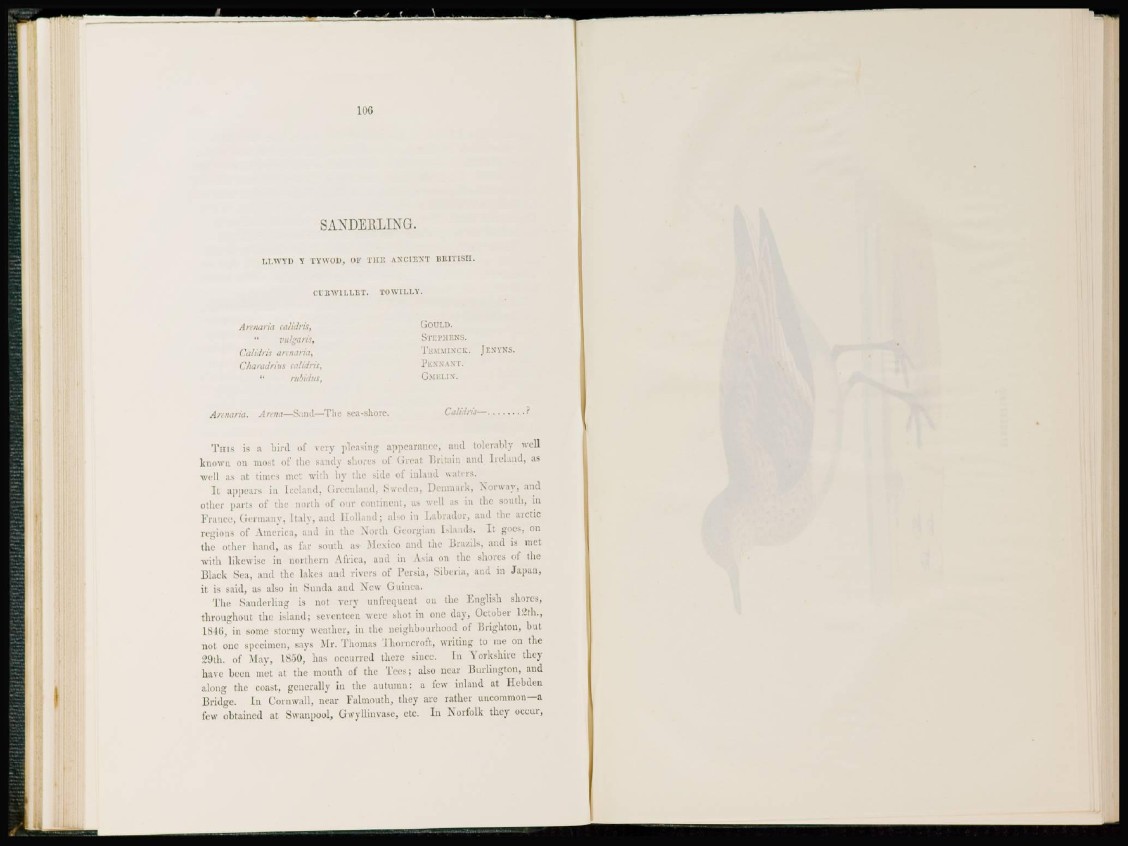
SANDEltLING.
I.LWYI) T TYWOl), ui' THE ANCIENT BRITISH.
CI R WIL 1. ET. TO WILLY.
Armaria caJidris, GOULD.
vulgaris* STEPHENS.
Calidris arenaria, TEMMINCK. JENYNS.
Charadrius calidris, PENNANT.
rubious, GMELIN.
Armaria. Anna—Sand—The sea-shore. Calidris— ?
T i n s is a bird of very plensing appearance, and tolerably well
known on most of the sandy shores of Great Britain and Ireland, as
well as at times met with by the side of inland waters.
I t appears in Iceland, Greenland, Sweden, Denmark, Norway, and
other parts of the north of our continent, as well as in the south, in
France, Germany, Italy, and Holland; also in Labrador, and the arctic
regions of America, and in the North Georgian Islands. It goes, on
the other hand, as far south as Mexico and the Bra/.ils, and is met
with likewise in northern Africa, and in Asia on the shores of the
Black Sea, and the lakes and rivers of Persia, Siberia, and in Japan,
it is said, as also in Sunda and Xew Guinea.
The Nanderling is not very nnfrequent on the English shores,
throughout the island; seventeen were shol in one day, October 12th.,
1846, in some stormy weather, in the neighbourhood of Brighton, but
not one specimen, says Mr. Thomas Thorncroft, writing to me on the
29th. of May, ISoO, has occurred there since. I n Yorkshire they
have been met at the mouth of the Tees; also near Burlington, and
along the coast, generally in the autumn: a few inland at Hcbdcn
Bridge. In Cornwall, near Falmouth, they are rather uncommon—a
few obtained at Swanpool, GwyLUnvase, etc. In Norfolk they occur,